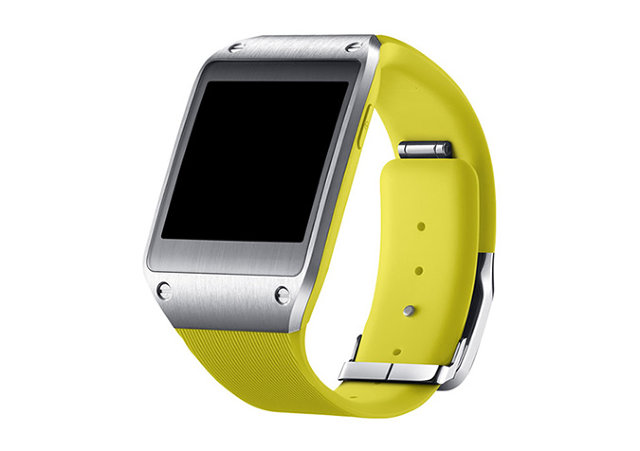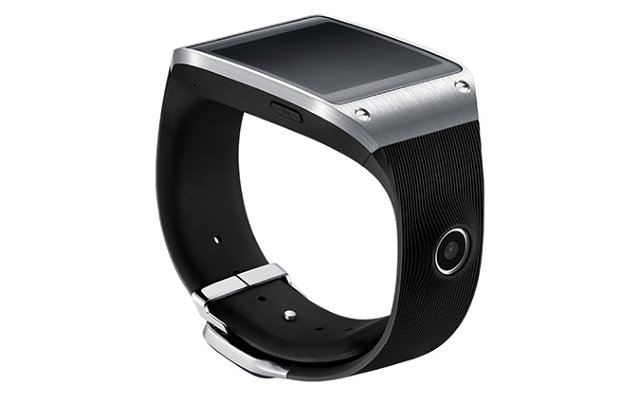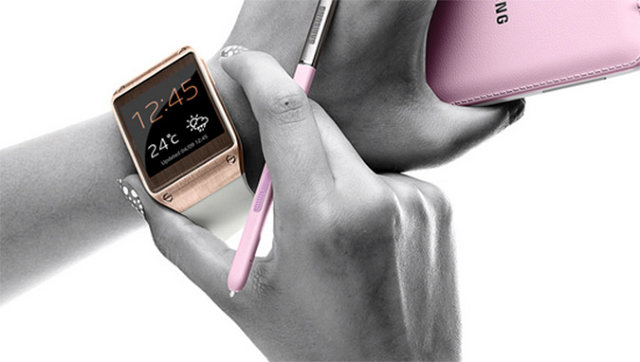SOON, WEARABLE TECHNOLOGY WILL BE AS COMMON AS THE IPHONE. AN EXPERT IN ERGONOMICS SHOWS THE BEST WAY TO DESIGN FOR THE SMALL SCREEN.
Five years ago, I coined the phrase “Ergonomics of Interaction Design” to explain how physical ergonomic principles could be applied to the design of user interfaces. At the time, many thought of ergonomics only as it related to 3-dimensional, tangible products where issues of physical fit and comfort were considered critical (think: office chair). But the rapid proliferation of gestural and touch interfaces combined with the widespread use of devices in unconventional contexts--in bed, while driving, while walking--signaled growing design challenges.
Since then, display clarity and touch-screen sensitivity have advanced. Designer awareness and attention to physical interactions have inched upward. But there is still much more to do.

Smartwatches are the next wave of the physical/digital convergence. Unfortunately, they seem to come with a set of false preconceptions about how they should and could be designed and used. So here are five counter-intuitive tips to consider in the design of these emerging devices.
Smartwatches Are Not Little Smartphones
A misconception in smartwatch design is believing that these devices are scaled down versions of smartphones, or even “second screens” to a smartphone. The problem with this approach is that it doesn’t account for several meaningful differences. Consider the following small, but important, distinctions.
A misconception in smartwatch design is believing that these devices are scaled down versions of smartphones, or even “second screens” to a smartphone. The problem with this approach is that it doesn’t account for several meaningful differences. Consider the following small, but important, distinctions.

Ergonomically, smartphones are carried whereas smartwatches are worn on the body. Emotionally, smartphones are seen as tools whereas smartwatches are primarily considered decorative. And when it comes to user interaction, smartphones are inert when not in use, but watches are always on.
Consequently, both the physical and interaction design of these body-worn devices need to be based on their unique characteristics of use, rather than trying to duplicate their bigger smartphone brothers.Wearable Doesn’t Mean Just for the Wearer
Wearable digital devices will eventually become commonplace, but their current novelty draws attention to the wearer and the device. This presents a unique opportunity to expand what these watches might do. In fact, the high visibility of smartwatches could allow users to more easily communicate information with others. Consider a smartwatch as you might a digital mood ring--a tool for selectively sharing information (images, content) rather than just handing someone your smartphone. If the watch becomes a portal of information for others, not just the user, it would allow a smartwatch user to more readily share information without going into the often awkward postures associated with using smartphones.
On Your Body Doesn’t Equal Ergonomic

Speaking of postures, keep in mind that while wearing a device eliminates the need to carry it, that doesn’t automatically make it accessible or easy to interact with. Utilizing a wrist worn touch screen requires rotating one arm inward and reaching across the body with the other arm--not a difficult gesture, but one that’s uncomfortable to do repetitively. Designers need to keep this in mind and limit interactions accordingly.
Small Displays Are Like Big Displays
Surprisingly, the small displays on wearable devices have more in common with large screen displays like TVs than they do tablets and smartphones. Very large and very small displays share a common interaction model: both are based primarily on information consumption rather than information generation and therefore rely on limited data entry. In fact, such similarities make smartwatches an excellent tool for interacting with big displays, such as remotely controlling your TV.
Visual and Tactile Are Equal
On smartphones, visual is primary and tactile is secondary. We use vibrate mode to reduce distraction and disruption, and rely on the rich visual displays typically only when we are directly interacting. Conversely, a smartwatch may be continually displaying visual information (it’s a watch after all) without any user interaction. But as wearable devices are in direct contact with the skin, tactile feedback can be even more salient and communicative than visual. As a result tactile feedback is just as important, and in some cases, more important than visual display.
On smartphones, visual is primary and tactile is secondary. We use vibrate mode to reduce distraction and disruption, and rely on the rich visual displays typically only when we are directly interacting. Conversely, a smartwatch may be continually displaying visual information (it’s a watch after all) without any user interaction. But as wearable devices are in direct contact with the skin, tactile feedback can be even more salient and communicative than visual. As a result tactile feedback is just as important, and in some cases, more important than visual display.
Sometimes we need to redefine our frame of reference when it comes to emerging design. In the case of smartwatches, trying to force fit the product into a predefined space--a smartphone that you wear like a watch--will lead to narrow thinking at best and failed products at worst.
http://www.fastcodesign.com/3022457/5-surprising-principles-for-designing-smartwatches